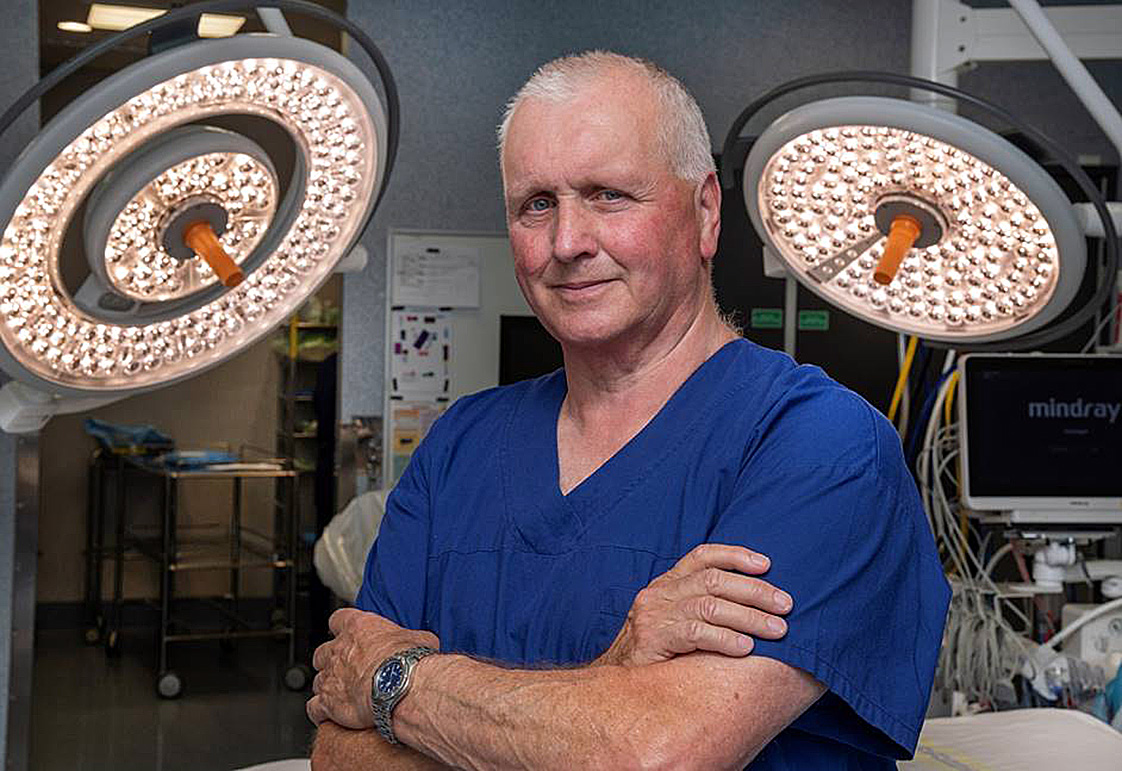Damage to young girls through medical misdiagnosis

COMBATTING MEDICAL TRAUMA: Vascular surgeon Dr Chris Holdaway has spent the past 18 months assisting patients struggling to obtain Ehlers Danlos and abdominal vascular compression diagnoses. Photo supplied
Alisha McLennan
Whakatāne’s Rachel Weatherley has watched her life disintergrate. She is a shadow of her former self, living in extreme pain, unable to keep down enough food to maintain weight and mostly housebound aside from medical appointments. In part two of this two-part feature about the struggle for diagnosis of a vascular variant of Ehlers Danos Syndrome, Beacon reporter Alisha McLennan talks to a Waikato surgeon and two mothers who have become advocates in the wake of their daughters’ diagnosis and successful treatment.
A vascular variant of Ehlers Danlos Syndrome is continuing to be ignored or misunderstood by the public medical system, a negligence resulting in the traumatising of young women with the disease.
Hypermobile Ehlers Danlos Syndrome, a vascular variant of Ehlers Danlos, which results co-morbidity Abdominal Vascular Compressions is an issue affecting many young women across New Zealand, with many life-saving surgeries available only overseas.
Waikato-based Vascular surgeon Dr Chris Holdaway began looking into the disease 18 months ago, and since then has helped 139 patients access treatment.
The needs of young people in New Zealand suffering with hEDS has postponed Dr Holdaway’s retirement.
“I was meant to retire 18 months ago, but I’ve become so incensed,” he said.
He said the hEDS was “a nasty problem” and typically manifested in musculoskeletal issues from ages 5 until 8, with children experiencing dislocated shoulders or being double jointed, and having “more than their fair share” of difficulty feeding.
“The large majority of my patients are females, although I have a couple of male patients,” Dr Holdaway said.
Many may also experience additional symptoms such as migraines and left leg weakness, seemingly unrelated ailments that are later explained by an EDS or hEDS diagnosis.
He said once patients reached adolescence, symptoms could shift from musculoskeletal to problems with eating.
The stomach and intestines are weakened and do not coordinate properly, and the patient will have difficulty emptying fluids and solids and experiencing obstructions causing significant pain.
“A lot of these kids stop eating. You see a lot of food avoidance, low BMIs, and levels of starvation you usually only see in movies,” he said.
He said most patients come to him severely underweight after being misdiagnosed by gastroenterologists and general surgeons who might not know of or understand hEDS well.
“Abdominal Vascular Compression Syndromes are not at all well understood or believed by gastroenterologists.”
He said AVCs had multiple causes that could not be explained solely by gastroenterology, and many doctors fell back on misdiagnosing young girls with eating disorders or endometriosis.
“These young girls have been told they have psychological problems, go through the mental health process, some have been admitted.
“Think of the effect on a young girl, and what that would do to your self-esteem and confidence.”
He said a lot of these patients could develop mental health issues, but it was a secondary result of how they had been treated and traumatised by the medical system, rather than the cause of their pain and inability to eat.
“It turns their mothers into what I call ‘tiger mothers’. They are so understandably angry and incensed, claws out, at how their child has been treated. I have to spend the first 10 to 15 minutes of an appointment with a new patient developing a rapport, earning trust.
“A hell of a lot of damage has been done to these girls.”
He has a big box of tissues prominent in his office for these occasions, and says many patients leave his office crying and red-eyed after being listened to.
“In some cases, I am the first health professional who has listened to them and believes in them.”
Diagnosing for hEDS is a prolonged process, stretched sometimes to years with disbelief from medical professionals.
“A combination of a special abdominal ultrasound is required, and a CT scan,” he said.
The ultrasound can take up to two hours to complete properly, carefully interrogating the celiac artery before and after a test meal; left renal vein and left iliac vein.
Once a diagnosis is received, if a patient requires surgery they have to look abroad, to Germany, Spain, Singapore, the United States or Australia.
The AVCS surgery available in Germany was removed from New Zealand’s High-Cost Treatment Pool after being deemed “too experimental”, meaning patients have to self-fund in some cases for life-saving surgery.
He has had 27 patients receive surgery in Germany, two in Spain and one in Australia.
The financial barrier means many of his patients must put up with their symptoms, which can vary in severity.
Once patients have returned to New Zealand, he said many had difficulty accessing aftercare treatment.
“There seems to be an unspoken condition, ‘if you go overseas, we’re not going to look after you’,” he said.
He said, ideally, more funding needed to be put towards researching these rare diseases, and some interest generated nationally about bringing AVCS surgeries to New Zealand, in either the private or public medical sector.
GIVEALITTLE FOR RACHEL

Rachel Weatherly and her family have a caravan and multiple vehicles up for sale, trying to fundraise the $150,000 needed for overseas surgery.
Unavailable in New Zealand, the lifesaving surgery will enable Rachel, a 22-year-old former elite footballer, to reclaim her health – and her future.
A Givealittle page has been set up, which as of yesterday had raised $24,000
Search “Please help Rachel get another chance at life” to donate.
READ MORE: Rachel's story: Struggle for diagnosis
Mothers helping others to navigate the path to diagnosis